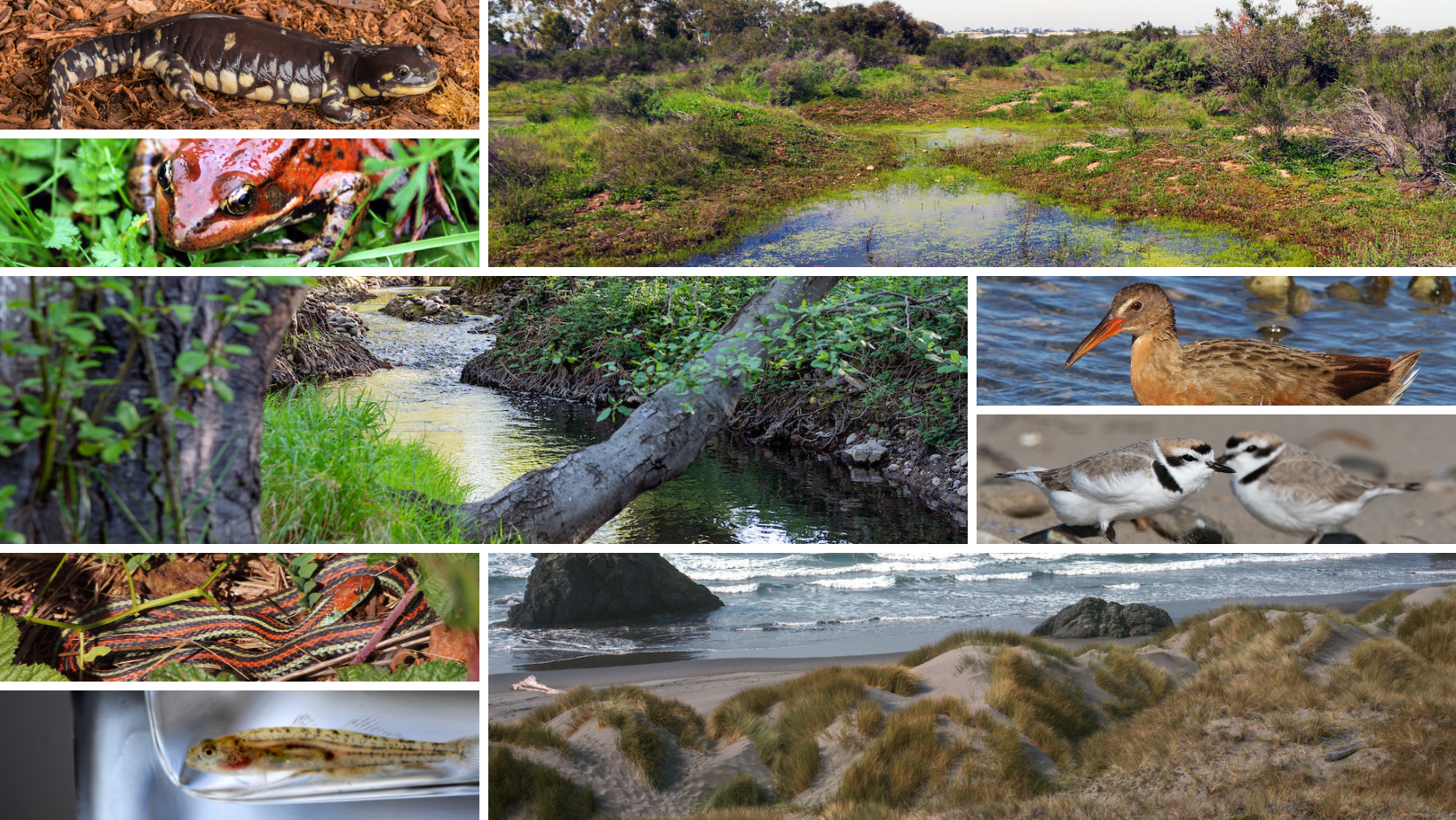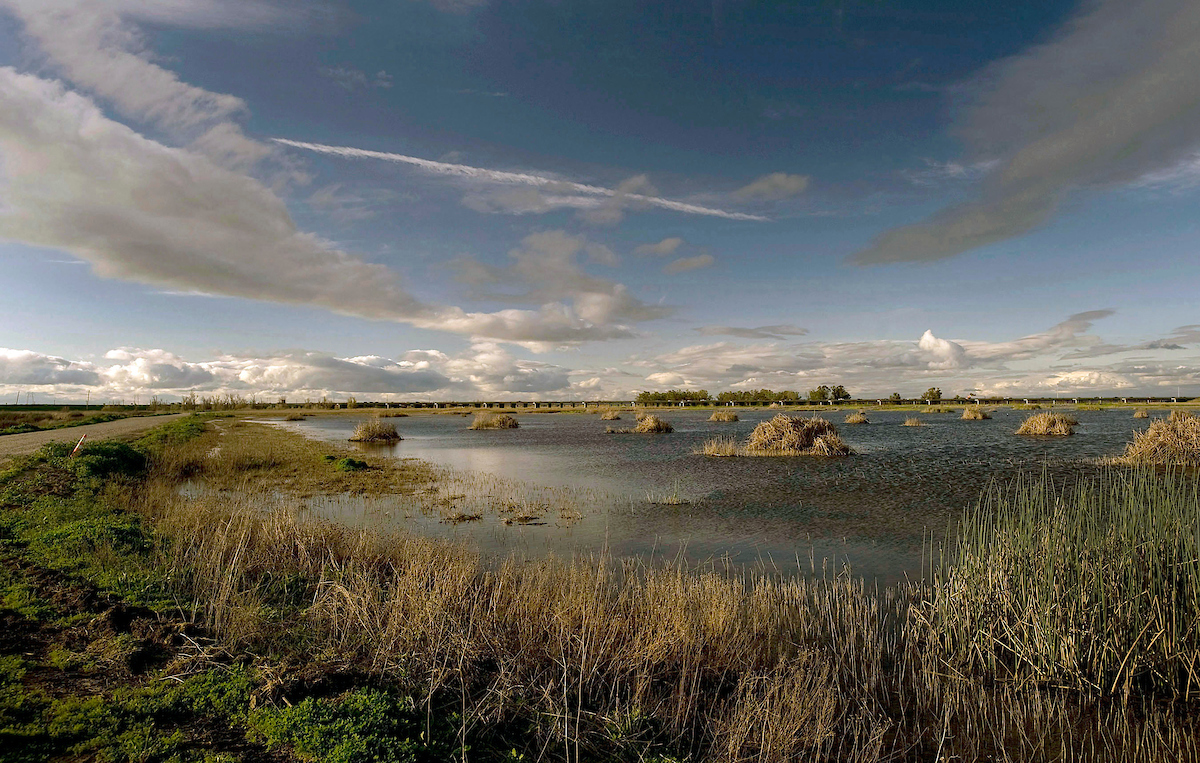
You may have heard about efforts like the State’s 30×30 land and coastal waters conservation initiative or Cutting Green Tape, which aim to conserve and restore habitat faster, and at a larger scale. But, why does the pace and scale matter?
With over 90% of California’s riparian habitat depleted and thousands of communities at risk from flooding, sea-level rise, and wildfires, we need more beneficial restoration done now – not years from now – to help California meet its conservation goals and protect our land, species, and people.
A New Federal Pathway
Sustainable Conservation works hard with agency partners, restorationists, and conservation organizations every day to make more restoration possible through expedited permitting pathways with state and federal agencies. We’re proud and honored to announce another significant milestone: a new Programmatic Biological Opinion (PBO) with the U.S. Fish and Wildlife Service (USFWS.)
The new Section 7 consultation, or PBO, with USFWS was developed in partnership with Sustainable Conservation, the National Oceanic and Atmospheric Restoration Center (NOAA RC) and the U.S. Army Corps of Engineers (Corps.)
PBOs are valuable because they eliminate the need to write a new authorization for similar kinds of projects, which can save a lot of time and resources for agencies and applicants. Now, projects just need to qualify for the pre-written authorization to be eligible for approval.
We dug into all the PBO nuances to demystify some of the most exciting and unique details about how it can benefit your – or your neighbor’s – next restoration effort, and help save time and money.

Why does restoration matter? 8.1 million tons of CO2 are absorbed by U.S. wetlands alone. That’s the equivalent of more than 900 million gallons of gas! Source: NOAA Restoration Center. Photo: Steve Payer/California Department of Water Resources.
1. The PBO is designed to help restoration proponents comply with the Federal Endangered Species Act (ESA).
Our changing climate means mounting challenges for our most imperiled and threatened species. We need new pathways to do beneficial restoration not just to restore the habitat that species need to exist, but to bolster, support, and connect critical places where wildlife can adapt over time to climate extremes.
USFWS’ agency mandate includes monitoring and enforcing the ESA. The new PBO covers 10 different kinds of restoration projects in aquatic and riparian habitat, including stream crossing and fish passage improvements; floodplain restoration; wetlands restoration for living shorelines, estuaries, and ecotone levees; and water conservation efforts to benefit wildlife habitat.
“We are truly in a race against time to do the amount of restoration needed to save species and protect our waterways. The PBOs and other efficient authorizations like them are going to be an essential tool to make it happen. It’s very powerful when agency regulatory staff and restoration stakeholders are all part of the solution.” – Erika Lovejoy, Accelerating Restoration Program Director
2. The PBO builds on and complements our past work with NOAA RC.
Need a permit for a project that affects Coho salmon, or other fish that migrate from freshwater to the ocean and back again to spawn? The National Marine Fisheries Service (NMFS) PBOs cover anadromous fish and other species, and we helped develop several in partnership with NMFS and NOAA RC. NOAA regularly leads the way on PBO development, and keeps established PBOs updated and renewed so restoration proponents can use them now, and into the future.
Need a permit for a project that affects terrestrial animals, invertebrates, or other kinds of creatures? This new USFWS PBO can be your expedited pathway to get your project in the ground.
Need a permit for both kinds of species? This scenario is more common than you might think: many restoration projects require multiple permits from different agencies. This new USFWS PBO means less application time for you if your project fits the criteria, less staff time spent on processing, and more time doing what matters most: restoring our state’s ecosystems.
“I’m looking forward to seeing the cost and time savings each applicant and agency staff person will experience using this new programmatic approach, and I’m very excited to continue our outreach in the future.” – Katie Haldeman, Senior Project Manager
3. The PBO covers 72 species – the most an authorization we’ve worked on has ever covered!
Habitat restoration can be complex, and many different animal and plant species make our waterways their home. Finding ways to cool and slow flows, introduce new spawning ground for fish, and replace invasive plants requires balancing the needs of every finned, winged, and four-legged resident.
We worked hard with dedicated USFWS staff to make sure the 72 species – all with their own specific protection measures and unique habitats – are covered. These species include wetland and forest birds, reptiles, amphibians, and even plants.
“It’s exciting how many different project types we were able to build into this authorization, and how many species are included. The number of projects that could possibly use this PBO is more than we’ve ever had before, and builds on our great track record of effective environmental protections.” – Stephanie Falzone, Project Manager
What’s Next?
Almost 250 projects have been approved in California under existing permitting pathways we’ve helped develop with partners. With many more beneficial projects in the pipeline, more restoration funding, support for agency staff, and efficient permitting pathways and authorizations with all agencies are critical to getting these projects done.
Sustainable Conservation looks forward to continuing this vital work with more partnerships, comprehensive outreach for restoration proponents, and driving systemic change across California to restore our state. Stay tuned for an exciting new resource for restoration proponents this winter!
Restoration creates jobs, bolsters our climate resilience, and benefits threatened species. Collaboration for healthy streams, wildlife, and watersheds is a win for our environment and our communities. Thank you to all our partners for their perseverance and dedication to making this authorization a success.
